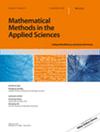Asymptotic behavior of the Boussinesq equation with nonlocal weak damping and arbitrary growth nonlinear function
IF 2.1
3区 数学
Q1 MATHEMATICS, APPLIED
引用次数: 0
Abstract
In this paper, we consider the asymptotic behavior of the Boussinesq equation with nonlocal weak damping when the nonlinear function is arbitrary polynomial growth. We firstly prove the well-posedness of solution by means of the monotone operator theory. At the same time, we obtain the dissipative property of the dynamical system associated with the problem in the space and , respectively. After that, the asymptotic smoothness of the dynamical system and the further quasi-stability are demonstrated by the energy reconstruction method. Finally, we show not only the existence of the finite global attractor but also the existence of the generalized exponential attractor.
求助全文
约1分钟内获得全文
求助全文
来源期刊
CiteScore
4.90
自引率
6.90%
发文量
798
审稿时长
6 months
期刊介绍:
Mathematical Methods in the Applied Sciences publishes papers dealing with new mathematical methods for the consideration of linear and non-linear, direct and inverse problems for physical relevant processes over time- and space- varying media under certain initial, boundary, transition conditions etc. Papers dealing with biomathematical content, population dynamics and network problems are most welcome.
Mathematical Methods in the Applied Sciences is an interdisciplinary journal: therefore, all manuscripts must be written to be accessible to a broad scientific but mathematically advanced audience. All papers must contain carefully written introduction and conclusion sections, which should include a clear exposition of the underlying scientific problem, a summary of the mathematical results and the tools used in deriving the results. Furthermore, the scientific importance of the manuscript and its conclusions should be made clear. Papers dealing with numerical processes or which contain only the application of well established methods will not be accepted.
Because of the broad scope of the journal, authors should minimize the use of technical jargon from their subfield in order to increase the accessibility of their paper and appeal to a wider readership. If technical terms are necessary, authors should define them clearly so that the main ideas are understandable also to readers not working in the same subfield.

 求助内容:
求助内容: 应助结果提醒方式:
应助结果提醒方式:


